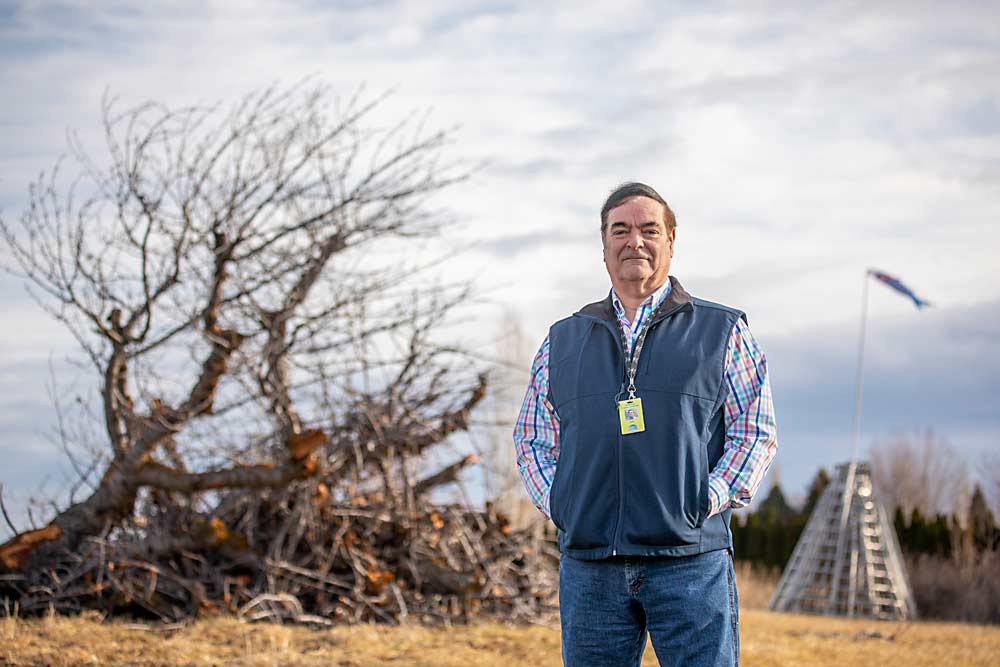
Fed up with increasing costs and diminishing returns, farmers occasionally throw up their hands and retire, walking away from the orchards they spent decades tending.
But their apple trees don’t just stop growing, and codling moth females don’t stop looking for a place to lay their eggs, either.
County pest program managers and entomologists throughout the Northwest are reminding growers to be on the lookout for such blocks — unmanaged but still producing fruit, providing attractive habitat for economically damaging pests such as apple maggot, codling moth, western cherry fruit fly and leafhoppers.
The apple industry’s economic doldrums and the spread of little cherry disease bring new attention to an old problem: A pest infestation in a feral orchard puts more pressure on neighboring commercial growers, driving up their costs, overwhelming their integrated pest management programs and forcing them to use more insecticides.
“That happens not infrequently in the world I live in,” said Keith Mathews, program coordinator for the Yakima County pest and disease board.
This is one reason why codling moth pressure, once thought to be well-managed with IPM and pheromone disruption, is increasing, said Chris Adams, Oregon State University entomologist and chair of the Northwest’s codling moth task force.
The same dynamic plays out in his state near Hood River, Adams said. He and other fruit industry representatives have been knocking on doors to at least communicate with landowners about it. Ideas include asking them to allow someone to thin, spray insecticides, set up mating disruption or release sterile moths.
“Of course, this only addresses one key pest, and we don’t have a plan for who would pay for these services,” Adams said.
OSU Extension specialists have been asking the local land trust and other groups to help growers write succession plans that address those small family orchards that may be at risk of neglect, and they are inviting experts on the topic to speak at grower meetings this coming winter. Columbia Gorge Fruit Growers has a backyard tree program, with funding, to help property owners remove problem trees and even replace them with something that doesn’t bear fruit. The nonprofit also has partnered with Hood River County and the Oregon Department of Agriculture to create an enforcement process, as a last resort.
“We are trying to work with people who have, for any number of reasons, found themselves unable to manage the farm anymore,” Adams said. “Addressing the problem after the orchard has been unmanaged for a few years is obviously not the best way.”
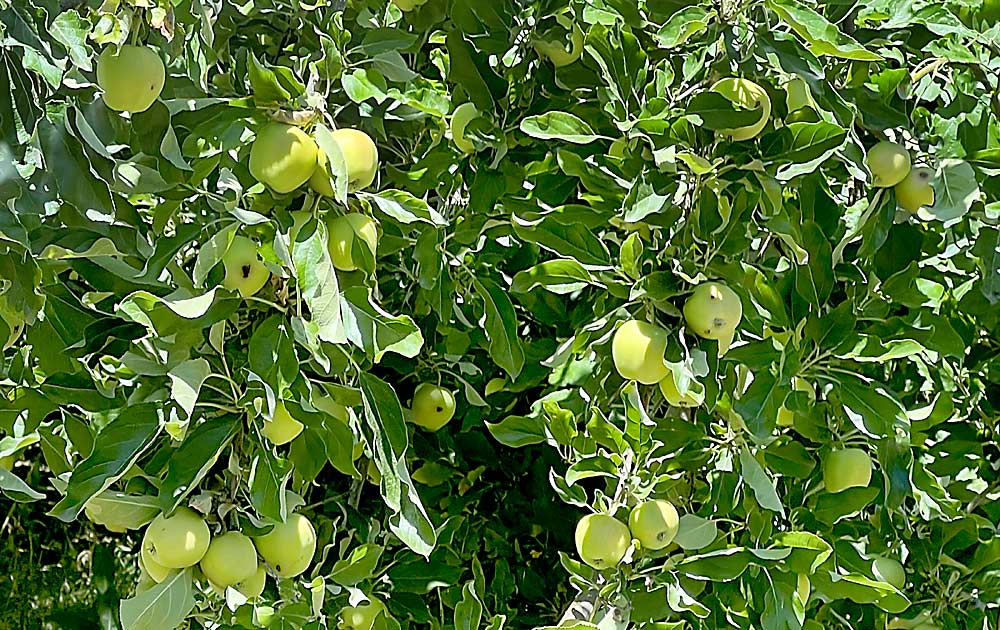
Laws, funding help
While both Oregon and Washington have laws that govern pest and disease control near commercial orchards, Washington has county pest boards, with program managers like Mathews, to enforce compliance. Oregon does not, Adams said.
Pest board managers have tools — state laws and sometimes funding — to mitigate these problems. A horticultural tax supports the pest board operations in each county.
For example, if they suspect unmanaged fruit trees are posing a commercial risk, pest board managers are allowed to walk onto private property to investigate and take photos. They can mandate that property owners remove trees, thin, spray or otherwise mitigate the problem. In extreme cases, the pest boards will front the money for orchard removal and put a lien on property to recover funds.
Also, counties sometimes have access to grant money for cherry tree removal to prevent the spread of little cherry disease. In 2021, pest boards, county conservation districts and Washington State University Extension began a cost-sharing program for testing and removal of infected cherry and stone fruit trees, funded by a state Specialty Crop Block Grant.
Unmanaged trees don’t always look like a stereotypical abandoned orchard, Mathews said. Sometimes, owners of new homes or businesses build on land carved from an orchard and decide to leave a row or two of apple trees, because they look nice, Mathews said.
Or, a farmer passes away and the remaining family members aren’t interested in continuing to farm. While they decide what to do with the old back 40, pests set up shop. The larger the family, the tougher it can be to find consensus.
Throw in overlapping jurisdictions, such as tribal lands and public parks — yes, Mathews had to navigate the bureaucracy to have trees removed from a state park — and the problem becomes even more complex and time-consuming.
In North Central Washington, pest authorities are working with tribal governments to draft standard operating procedures for abandoned orchards, hoping to speed up decision making, said Will Carpenter, director of the Tri-County Pest Board, which covers Okanogan, Chelan and Douglas counties.
In the rural stretches of Okanogan County, the state’s largest county geographically and one of the most rural, Carpenter still comes across old homesteads with trees that haven’t been managed for decades.
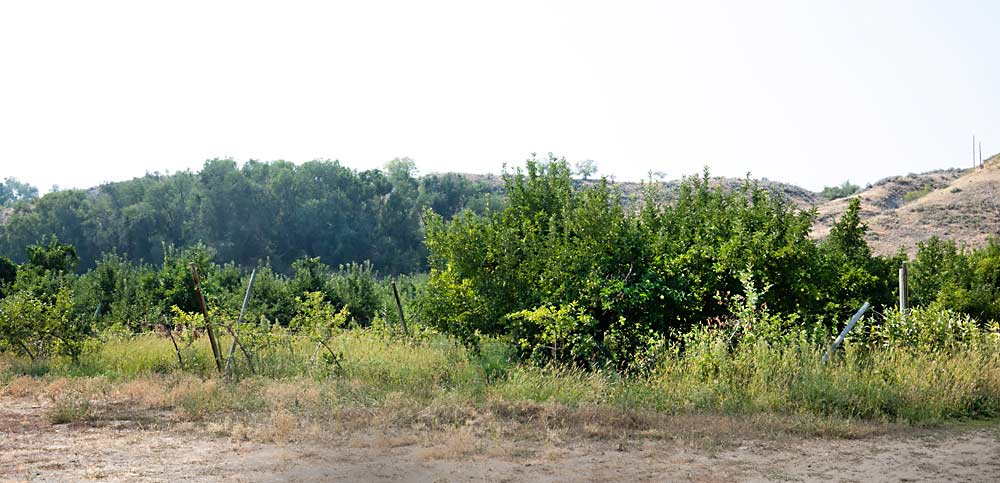
“It’s not widespread,” Carpenter said, but it doesn’t need to be. A small unmanaged pocket of trees can cause a lot of damage and give an entire growing region a black eye.
Mathews and Carpenter remind growers to call them when they find unmanaged trees, preferably early in the season before pests breed multiple generations.
Sometimes, unmanaged trees, especially root suckers from orchards past, aren’t visible until weeds dry out and turn brown. Commercial growers sometimes don’t speak up about abandoned trees until their own pest pressure increases later in the season.
Experts say the problem is tough but manageable with areawide communication and consistent messaging to those outside the industry circle.
“I find, generally, the public is fairly easy to get along with,” Mathews said.
—by Ross Courtney

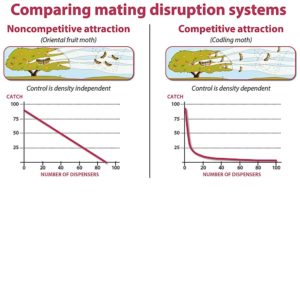
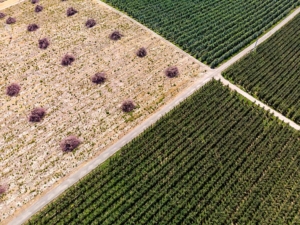





Leave A Comment